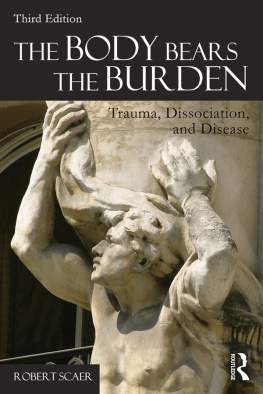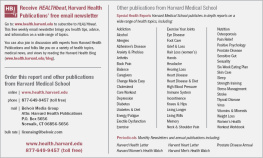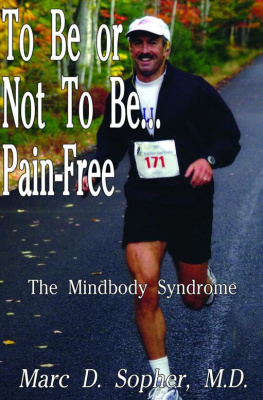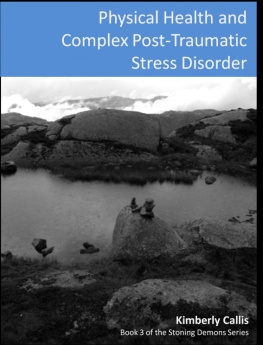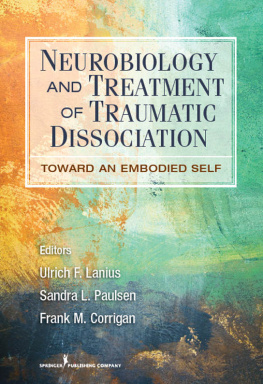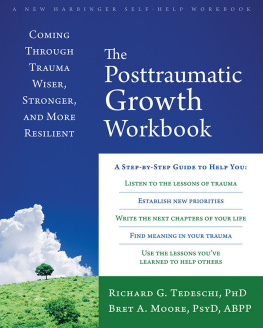one
Concepts of Traumatization: The Role of Boundaries
Jane came into my office clearly in a state of distraction and fear. She had been involved in a relatively low-speed auto accident two months before, and instead of improving, she had begun to experience worsening cognitive and emotional symptoms. She had begun to misplace things frequently, had spells of severe physical weakness, had fallen several times, and had developed a stutter. At other times she felt agitated and fearful, and was intolerant of any stimulus, including noises, bright lights, and even simple conversation with family and friends. Even brief exposure to these seemingly minor stimuli produced confusion, anxiety, and ultimately exhaustion. When I examined her, she visibly jumped, and then pulled her arms tightly around herself when I walked around the back of the exam table to examine her spine. When asked, she stated that she felt extremely anxious and uncomfortable when I stood behind her out of her field of vision, even with a female chaperone in the room. Her past social history revealed that she had experienced a physically traumatic rape at age sixteen. She acknowledged that she had always been uncomfortable when she was in a crowd with people behind her whom she could not see. In a classroom, a theater, or at a party, she usually positioned herself with her back to the wall.
* * *
The benchmark for psychiatric diagnoses, the Diagnostic and Statistical Manual of Mental Disorders, Fourth Edition (DSMIV), defines trauma as, The person experienced, witnessed, or was confronted with an event or events that involved actual or threatened death or serious injury, or a threat to the physical integrity of The critical change in this definition is the addition to the concept of trauma that involves threatened death or serious injury. In other words, this concept now implies that trauma is an event or experience that threatens the survival of the individual.
Examples of traumatic events that the DSMIV lists include military combat, violent personal assault (sexual assault, physical attack, robbery, mugging) kidnapping being taken hostage, terrorist attack, torture, POW, natural or man-made disasters, severe MVAs life-threatening illnesses When the trauma is inflicted by another person, it is especially intense, or when the traumatized person is extremely close to the trauma, the severity of the trauma and its symptoms may be especially profound.
These definitions of trauma and its causes are useful, and much more specific than earlier concepts of sources of trauma as representing stressful events outside the usual range of human experience. However, they still do not approach the basic premise that in all cases, a traumatic experience in its intrinsic sense is one that represents a threat to the very survival of the individual. In this definition, the meaning of the experience may be as important to the traumatized person as what actually physically happens to that person.
Being kidnapped, mugged, raped, involved in warfare, or in a severe MVA are all life-threatening experiences, and therefore potentially traumatizing. Photographs of survivors of tornadoes, floods, or other natural disasters clearly reflect the shock, grief, and suffering associated with shocking and life-threatening natural events. Witnessing a graphically violent event could be perceived as shocking and traumatizing, especially if the event had personal meaning or involved another human being. Childhood trauma is perhaps the easiest to understand, given the intrinsic vulnerability of the developing child to all types of experiences. Even learning second hand about a severe traumatic event involving a loved one generally is a source of shock to a person. How all of these events may represent a threat to ones survival is less clear unless one considers the concept more carefully. We can basically say that trauma is an experience that is perceived to be a threat to life in the face of helplessness. And helplessness may in fact be the defining element that generates the neurophysiology of trauma itself.
We all live in a small and safe world of our own defined by invisible but very real perceptual barriers, or boundaries. These boundaries are formed by our collective experiences with the world around us, some of which are positive or rewarding, some negative or punishing. Negative experiences are associated with pain, which may be as obvious as physical discomfort, or as subtle as withdrawal of a reward. Perhaps one of the earliest pains that we are likely to experience is the disapproving frown of our mother to our irritating infantile behavior. The mothers negative response produces shame, and creates perhaps the first boundary in the perception of the infant-mother connection. All of our sensessmell, vision, hearing, vestibular input, taste, touch, nociception (sense of pain) and proprioception (sense of joint motion)contribute to the formation of these boundaries that eventually tell us where we end as a perceptual entity, and where the rest of the world begins. Our unconscious awareness of these boundaries allows us to move about in the world without literally impacting obstacles that are not part of our own self. We receive positive or negative information as a developing infant and child from sensory experiences that contribute to our unconscious perception of our safe boundaries. Painful or unpleasant feedback leads us to avoid moving beyond the boundary created by that experience, whereas positive feedback stimulates us to explore the area within that expanded boundary more. This sensory feedback loop continuously helps form and reform our boundaries based on ongoing life experiences and the sensory messages associated with them. We are able to develop a very specific awareness of how safely we may challenge the world around us. This perceptual concept of our boundaries theoretically could be a significant part of our sense of self. The more positive our ongoing life experience and the more intense the associated positive sensory experience, the more solid our personal sense of boundary will become. The more solid our boundaries, the more safe, secure, and effective we will be in dealing with the world outside us. In many respects, this concept of boundary envisions a tangible, physiological, and perceptual entity.
How does this discussion of esoteric and invisible boundaries relate to concepts of trauma and threats to our survival? We identify from our very beginnings those objects in our environment that are essential to our survival through the process of boundary definition. Obviously the first persons we identify with are our caregivers, particularly our mothers, through attunement between the infant and mother. We hopefully receive more rewarding experiences from these critical figures in our early childhood than we will ever again receive in our lives. We are able to expand our boundaries with our caregivers far beyond our perceived physical selves. Before the sense of shame is inevitably introduced, we are literally without a sense of boundary between our maternal caregiver and ourselves. But the early maternal-child bond is temporary, and boundaries must be formed She signals displeasure through a negative facial expressionthe blank-faced motherin response to the infants behavior, instilling in the infant its first sense of boundary definition. She then automatically restores the connection through approval with a smile and vocal reassurance. In a healthy caregiver and family environment, the growing child will experience a sense of expansive and generous boundaries. The childs sense of self may range widely and freely without risk of traumatic impact. The caregiver is always there to address the hurt, discharge the threat, and, in effect, rebuild the safe boundary. At the same time, a solid sense of where the infant indeed does impact the rest of the world is instilled in gradual ways through subtle negative maternal feedback. A strong sense of self and of safe boundaries separating us from the world around us gives us unique resilience to deal with perceived threats to survival that we inevitably experience in our daily lives. Using this concept of boundary allows us to understand why all of the relatively disparate examples of trauma in the DSMIV have in common the specific concept of threats to survival.

